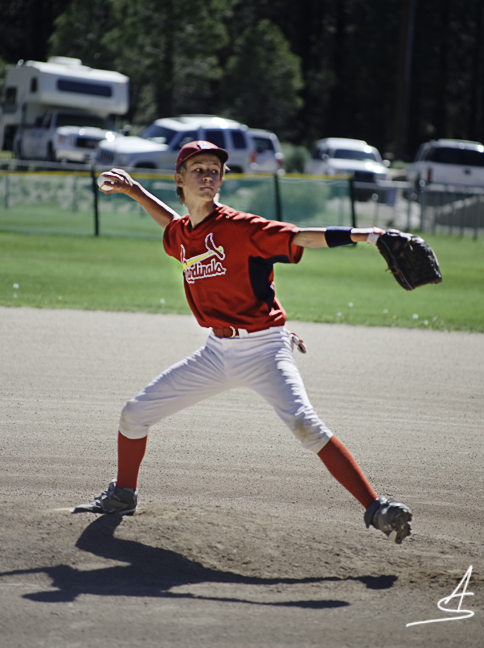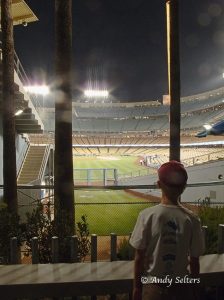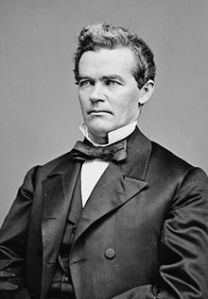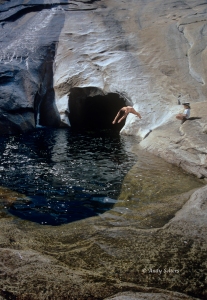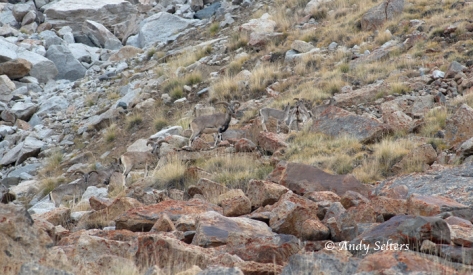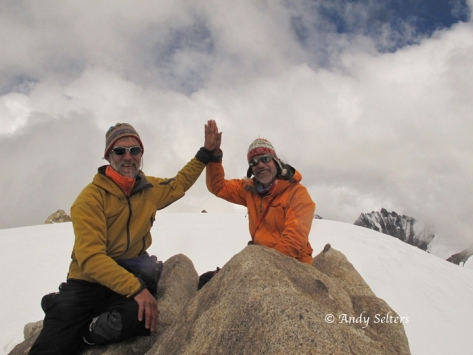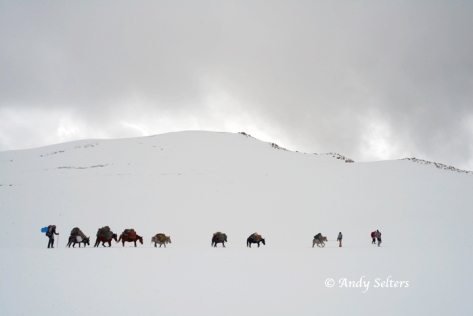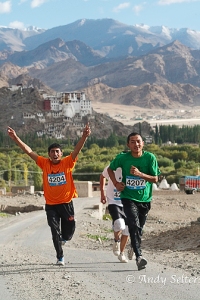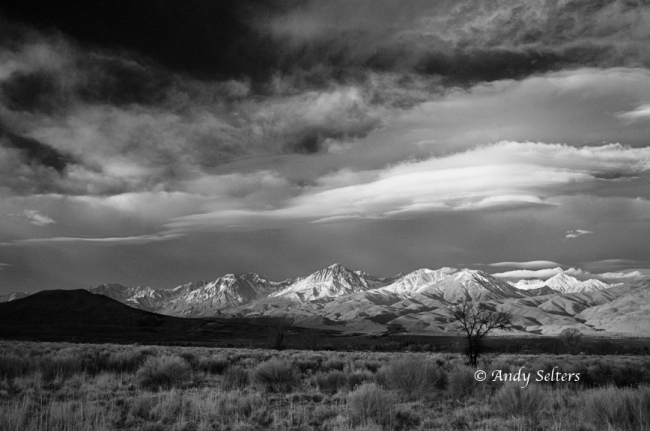When I heard about the coming release of a feature documentary on the terrible 2008 season on K2, The Summit, I was swept back to those awful days because I was there. The documentary was produced by a non-climbing Irish filmmaker named Nick Ryan, and according to the publicity and trailer it documents how in under 48 hours people put out the hardest, most committing work of their lives, how it carried them up to the pinnacle of their lives, and how 11 of them died. The film uses some actual footage from 2008, probably including some of the Dutch team’s footage which I retrieved off the mountain. In trailers and excerpts I’ve noticed myself being shown helping to carry Wilco van Rooijen to a rescue helicopter, and later interviewing Pemba Gyalje Sherpa. Like the media storm around the Everest 1996 season, this film grabs (to obviously lesser fanfare) the attention of the general public with mountaineering as catastrophe. I comment at many levels because my partners Chuck Boyd, Dave Watson and I came to know most of the climbers, because we assisted them in as many little ways as we could, because I have done a lot of mountaineering and mountaineering writing and thinking, and because I gathered notes, audio, photos, and recorded interviews, realizing I was an experienced witness in a unique position who might bring the story to the world.

Filmmaker Ryan tells us that before this project he had no connection to mountaineering, but the August 2008 newsfeed drew him into it. The hook he says was reading a statistic that 1/4 as many climbers die on K2 as make its summit. Who would go into an endeavor where the level of sport is obviously super high and the odds of success vs dying are worse than in warfare? The trailers and publicity promise that the movie portrays that grim statistic in action. In interviews Ryan speaks with respect for all the climbers that season, but he says he leaves it to audiences to decide for themselves what the mountaineers and their game are about. Responses I’ve seen posted include phrases such as “adrenaline-seekers know no limits,” “they don’t have loved ones?” and “no brains.” It seems that the general public is fed wildly contradictory views of mountaineers: tremendous if enigmatic heroes or thrill-seeking nuts they can lump with the lemming myth.
It’s important to say that the “one-in-four, worse than war” statistic does not account for the majority of K2 climbers, who attempt and turn back more or less safely. Nevertheless, to us climbers K2’s death toll does not make the peak appealing, it makes us feel squeamish and ill. Certainly climbers often have dark sides, but climbing is too slow to be an adrenaline sport, and risk is not its seminal draw. Risk is something we assess, manage, work around, and yes, to some degree gamble with. As I look at the history of climbing K2 and I recall the attitudes I saw among climbers there that season, if there was anything unusual it was an edging into the notion that climbing K2 could be made fairly safe and more accessible than in the past. Many of the climbers there had summited Everest, and deploying Everest-developed support tactics had a lot to do with the optimism that K2 was ready to follow Everest into the notion that you don’t have to be a super alpinist, just a good one with an appropriate amount of logistical support. Notably this means coordination among teams to string fixed rope almost the whole way to the top, and Nepali Sherpa partners and employees to help lead that effort. And, to make it all possible and socially prominent there was Everest-scale underwriting from mainstream sponsors.
Chuck, Dave, and I (and at first, Dan McCann) went there with a plan to “warm up” and acclimatize on nearby Broad Peak, and then go to try K2. Notably, Dave and Dan are super-skiers, and they were set to ski the peaks, with me getting photos. During the July bad weather we’d often jaunt from our Broad Peak base up to K2 base, and we got to know most of the people. There was a fascinating international mix. When the good weather came and Dave and I made our sortie up to 25,000 feet on Broad Peak and descended, he turned on the handheld and I’ll never forget him relaying to me, “Really bad news on K2.” So asap we went up to K2 to help out. Even though I might never meet any of those K2 climbers again, I think all of us who were there feel a permanent camaraderie in having shared such an intense time. In a subsequent post I will offer some more general points in response to the movie, but first here are some highlight memories of the people I met, who I assume are most of the main characters in the documentary.
Gerard McDonnell struck me as a guy you’d want on your team not only because he knew what he was doing, but because he was fun-loving, level-headed, generous and thoughtful. He was simply operating on a higher plane of joy. Marco Confortola called him “Jesus” with only a hint of irony simply because he believed that Gerard was that remarkable. Gerard had a wry cynicism that fit with his living in Alaska and working as an oil engineer, a posting where he could take advantage of the type of mountaineering he loved. Everyone knew him as the most popular and friendly guy in basecamp, and he became the first Irishman to summit K2.
After reaching the summit near sunset, Gerard, Marco and Wilco bivouacked together. During the morning descent they came across three Koreans barely alive and hanging on fixed rope. Gerard and Marco struggled to revive and free the poor guys even as their own condition continued to deteriorate. They were forced to give up and carry on down. What Gerard did then has become a primary uncertainty in the saga. Marco told us that after he and “Jesus” rested Gerard went back up without explaining why. He figured that either Gerard wanted to give it another shot to save the Koreans, or he was delusional in his own condition and just wandered the wrong way. Marco said that then the ice cliff calved and he glimpsed what he believed was Gerard’s body being swept away. I’ve since read that Wilco has evidence that Gerard was successful in getting the Koreans going, but then the ice cliff took them all away.
Pemba Gyalje Sherpa proved himself to be one of the most heroic climbers of all time, but seeing him on camera I fear that the whole ordeal weighs heavily on him. I first met him upon our arrival at basecamp, when he came to borrow some pitons and other gear. At that time he seemed simply level headed with a familiar Sherpa joviality. At the midnight start time on summit day he realized that Korean-employed climbers were not up to their agreed tasks, so he helped lead the charge, stringing up fixed rope as well as aiming for the summit himself. At that altitude this is an almost absurd demand that he took in stride. Pemba did reach the summit, and he told me he waited an hour and a half for his partners Wilco and Cas van de Gevel to arrive too. They three started down together, but in the dark only Pemba and Cas negotiated back to Camp IV.
In the morning Pemba went back up to look for Wilco and came across Marco, who was sleeping and/or semi-comatose in the sun. Pemba roused him and put an oxygen apparatus on him, even though Marco became belligerent and delirious. Then the ice cliff calved, and Marco later said that Pemba sheltered him “like a baby” from the periphery of the falling blocks. Then Pemba got him on his feet and got him to Camp 4. “He saved my life,” Marco said.
Then Pemba started down the SSE Ridge route his team had come up, and made it down to Camp III. At that point no one knew the whereabouts of Wilco, and everyone had given up on him. But that night Pemba learned on the radio that Wilco had called his wife from somewhere above and was roaming to get down. Pemba went out and searched and called and heard Wilco’s phone ring but could not find him. Around dawn he went out again and again heard the ring of Wilco’s satellite phone, found him a few hundred yards above camp, and helped him and Cas down.
I later learned that on the way up Pemba had already saved a Serbian climber named Hoselito, at Camp III, when super-high winds in the middle of the night blew up “José’s” tent like a balloon and with him in it it hung by the anchor. Pemba got out of his own tent and rescued him.
As I see Pemba in publicity interviews for The Summit, I see he still has a love for mountains and a need to work as a climbing guide, but he no longer works on 8000 meter peaks. I also see a fatigued wisdom that probably runs deeper than what most of us can imagine. I think he bears a lot of weight on his shoulders from this whole tragedy and its strange notoriety. His restrained, modest and halting English probably makes it hard for most Americans to connect to him as a hero, and I think celebrity is to him something like a Martian language and a gross distraction. I hope when he’s back home and off camera he can still find his original lightheartedness.

I met Chirring Dorje Sherpa as he came down from the peak. He also helped lead the pre-dawn charge. A few of us stood rapt as he told how he came down from the summit in the dark and collected “Little Pasang.” Poor Pasang had lost his ice axe, and, staring into his headlamp beam toward the most notorious passage on the mountain, he told Chirring that he was thinking to just jump and get it over with. Chirring said “No way,” and he pieced together some runners and rope to connect their two harnesses. Chirring steadily led the way across the traverse and down the Bottleneck with Pasang holding on to his gear loops, punching his one axe into the ice and snow to anchor both of them with each tenuous step.

Wilco van Rooijen was one of two big man leaders on the mountain, he organized the team that included his trusted friends Gerard, Cas, Pemba, and a couple of others. I barely got to talk with Wilco, but so many trappings in basecamp pointed to the work of a powerful and gregarious man certain of his strengths and thoroughly in charge of his life’s obsession. During the long July storms he kept his psyche up by working with a small model of the house he was going to build with the money he expected to earn from being the first Dutchman to summit K2. The camp was sprayed with the word Norit, a Dutch water purification company that supplied much of his expedition’s €400,000 budget.
Twenty four hours after Wilco summited no one knew of his whereabouts and everyone understood that he was another one lost, for no one would survive a second night out in the open high on K2. But survive he did and the next day I was at camp with Chris Klinke and my binoculars spotting Wilco’s impossible little orange suit as it inched down in the vicinity of Cas and Pemba. Wilco had gotten lost in a puffy-cloud whiteout, alternately sat down and descended during the night and hung on in a miracle of tenacity.
His frostbite was severe, and after he made it down lots of us worked to improvise a litter and clear rocks for a helicopter landing. He seemed quite revived by the one night in basecamp with Dr. Eric Meyer’s care as well as his sense of triumph and deliverance. As we carried him to the chopper I believe he had his house model with him and he filmed the action with a camcorder from the litter.

After all the teams but ours were gone and the storm track returned Dave Watson and I went up to Wilco’s Camp II at 21,500 feet to retrieve gear and especially the camcorder with Wilco’s summit footage. Back in Bishop I shipped it UPS to him in Amsterdam, and when he finally reimbursed me a year later he included a pic of his feet half amputated, and a note saying he’d just run a 10k race in 45 minutes on the stumps.
Visiting the Norwegian team was a taste of what I imagine a trip to Oslo would be like, a wonderful experience with generous, friendly, organized and superbly competent people. When visiting their camp I did Photoshop management on their photos so they could send the shots home. Anchoring the foursome was the all-time expedition super-couple, Ceclie Skog and Rolf Bae. Among the gaggle of guys in basecamp it seemed like fantasy to see a blond beauty who was as capable of summiting as almost anyone there. To my further amazement I found that Cecilie is utterly approachable, and we became friends. We exchanged books, hers a coffee-table feature on her successful ski journeys to both poles and to Everest, all with Rolf. Later I would learn that she’d already done all of the 7 summits, and skied across Greenland too. As I thumbed through the colorful pages I understood that it was all seamless; her highest dreams were her everyday reality as well as the dreams projected and embraced all over Europe—an angelic sweetheart who with confidence and competence can play at the extremes of the earth.
Rolf was her worthy consort, and she his. He showed up in basecamp a week or so late, because, get this itinerary: he had in June completed the second ascent of the stupendous Norwegian buttress on Great Trango, flown home for a couple of weeks to fulfill some guiding requirements, then flew back to Pakistan to meet his wife and teammates to climb K2. In the middle of that season that no American climber could imagine he was thoroughly energized and animated; the biggest big wall, the baddest high peak, the ultimate wife, and daily he would laugh out loud with his buddy Gerard and any of us…he was on top of the whole mountain world and having a great time.
Lars Nessa looked like the weakling in their party, kind of scrawny and quiet, but certainly friendly too. I chuckled when I learned that actually he was the first among them to reach the summit, that he was one of the most efficient climbers up there.
Øystein Stangeland fit my image of a Norwegian: friendly, unassuming and solid, and I thanked him most every day of the expedition for handing me a couple of ropes from their bounty of moose sausage.
I happened to be standing with Mike Farris near the edge of camp when Cecilie, Lars, and Øystein showed up on their return. I went over and gave Cecilie the most memorable hug of my life, for we’d all heard that Rolf had been taken. I couldn’t comprehend the weight of her pain, but I asked if she’d like me at least to carry her pack the rest of the way into camp.
“No thanks, this is Rolf’s pack. We traded up there below the summit and I want to keep it on for awhile. It’s all I have left of him.” I hugged her again, pitifully little that I could do to soften her entry into a new world bereft of the love of her life.
She told me how on the way up the Serb Dren Mandic had fallen, crashing into her and bruising her hip and tumbling to his death, how the slow Koreans might have been wise to turn around, how Rolf slowed down and was the most circumspect of their team as they three times reassessed the wisdom of going on, but with the weather so flawless and the summit so near and she and Lars feeling strong…it was still adding to up, as long as they made it back to the traverse and the fixed ropes before dark. After the crux passages she said she gave Rolf her oxygen bottle but still he just didn’t feel that great, so he waited while she and Lars tagged the top. As planned, just before dark they made it down to the ropes and Rolf took over the lead as they maneuvered through the last, short pitches before the easy slope to camp. All seemed to have come together just right…until there was a big ripping noise and a yank on the rope ahead of her, and Rolf’s headlamp was gone. The serac had calved and swept him away. Her shouts to him and then her wails of despair echoed into the cosmos at 27,000 feet, so cripplingly far from home.
“I wanted to jump off to join him,” she said, “but Lars kept me going.”
She also said, “I hate this mountain,” and of course I couldn’t blame her. At night the cries from her tent made the glacier shiver.

Two years later Cecilie and American Ryan Waters skied unsupported across Antarctica. Normally I don’t see the point of rating climbers and such, but that trip convinced me that Cecilie Skog is the most accomplished woman adventurer of all time.
Frederik Strang hit me with tales and accent and gestures and intensity like a strapping Swedish blizzard. He told me how he and Eric Meyer saw how slow everyone was moving, appraised the dangerous looking ice cliff above, and together they decided together to turn around, it just looked like bad. Then he told how Mandich tumbled down and somehow stopped on a ledge, wobbled to his feet and waved, then collapsed. Word came that he had died, and the Serbian leader asked for help to bring his body back to Camp IV. Frederik said he took charge of that operation, four guys arranged with lowering lines. Frederik said he told everyone that if you stumble you let go and stop yourself with your axe. They began to sled the body down, and after a bit Frederik suggested they stop and switch places to give the load to different muscles. One of the helpers was a Pakistani porter named Jehan, a younger guy who had been let go from a Singaporean team because he was deemed unreliable. A French climber had then hired him to go high, but others also reported that he was prone to strange behavior.
Well Frederik got pretty animated as he told me how Jehan got clumsy and fell, and apparently made no attempt to use his axe, or maybe he’d lost it. Jehan held onto the rope, the rope threatened to tangle around Frederik’s ankles, and now Jehan became added weight to the lowering, and suddenly Frederik could feel the whole operation starting to lose control, they could all go down with the corpse. He started screaming at poor Jehan to get up and use his axe, but Jehan didn’t get it, he only grabbed more desperately. Frederik went drastic, he started whacking Jehan with his axe, screaming at him to let go and get up. Let go Jehan did, but get up he did not, and he slid away, and away, and tumbled off K2. Hearing this is when I really started blessing my stars that I had not been up there.
Marco Confortola was the last climber to come down. His partner Roberto Manni had turned back with a bad headache up high, and I met up with Roberto in basecamp gesticulating and shouting and everything, trying to get Sherpas, a helicopter, anything to help get Marco down. I did some bits of “go-fer” work with Roberto, and it was like I imagined a trip to Italy would be like. Arms waiving, Latin syllables flying like flocks of crazy bats, Roberto was on the sat phone to the head of the Club Alpino Italiano who was purportedly able to get high Pakistani generals and even Prime Minister Musharraf on the phone to send a helicopter up to 24,000 feet to pluck Marco off to safety. The weather had turned bad, and no chopper would be going high. Marco was frostbitten and worn past a frazzle, but he was coming down in pretty good hands, with George Dijmarescu and his Sherpa relatives Mingma and Rinjin having climbed up with oxygen bottles to escort him down over three days. I was in Roberto’s basecamp tent when he was on the radio to Marco directly, Marco was resting just above Camp II. As he listened Roberto sliced me a whack of the best cheese I’ve ever tasted. Then some noise came over the radio and it went quiet and Roberto shouted and shouted into it. Marco then came back on the line and said that he’d just been hit by stonefall. “Por amor de Diós, tiene duro, tiene duro! (For the love of God, have strength!)” With a dozen others I met Marco at the base of the Abruzzi, and a couple of us guided his unsteady, frostbitten gait back through the icefall and down the glacier to camp.

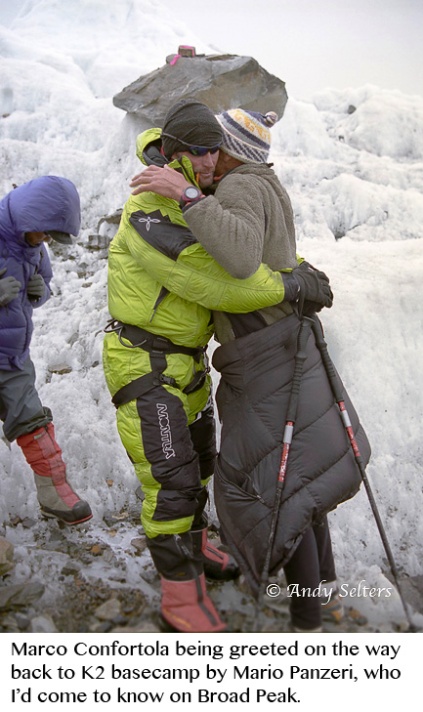
Kim Jae Soo I only met in the gloom after the dust was settled, when I sat in on Frederik’s interview of him. “Mr. Kim” was the Korean leader, and a very experienced Himalayan leader and a somber man indeed. To my surprise he said he’d led an expedition up Shipton Spire, a peak that Chuck and I helped name and almost made the first ascent of. His K2 team was the bearer of ample sponsorships from Busan, Korea’s second largest city. Busan was on a drive to compete with Seoul and launch into a bigger future, so Mr. Kim’s expedition collected the city’s motto and had a big banner proclaiming the “Flying Jump” expedition. The Korean climbers were there to carry a torch apparently at all costs for their ultra-competitive society, and this became a point of concern around camp. Mike Farris of the American team told me that when the teams met to coordinate plans he asked Mr. Kim when their return date was. Mr. Kim’s reply was, “We have sponsors who have given a lot of money to this expedition, and we will succeed.”
In his interview with Mr. Kim, Frederik bluntly asked: “How much were you willing to pay on this climb?”
Mr. Kim replied, “People die all the time on a big mountain expedition.”
Frederik then had him tell the whole story of the tragedy in Korean, and Mr. Kim told it for over half an hour. I wonder if filmmaker Ryan or any of the authors who have written books about this season have contacted Frederik to see that footage, because it likely has some important pieces of the story from the Korean perspective.
Mr. Kim had a tough job, and a heavy heart; three Korean partners dead, plus Sherpas “Big Pasang” and Jumik. The latter had accompanied him on peaks in Nepal many times before, and word had come from Nepal that on K2 summit day Jumik’s wife had just given birth to their first child.
Mi Sun-Go made it to the summit with Mr. Kim, and I got to talk to her for awhile too. She said, “This is a very sad mountain now.” She didn’t have much else to say about K2, she was happier to talk about rock climbing, and how before she started climbing Himalayan peaks she had been a star rock climber, pulling up 5.13 on a regular basis. Then just a couple of years previous she switched gears and took on a mission to be the first woman to climb all the 8000 meter peaks. There seemed to be a bit of a race going on with another Korean woman, Oh Eun-Sun, who I swapped breaking trail with on Broad Peak, but I got the impression that both of them are friends. “Mi-Sun” told me she was planning to pull off her remaining half a dozen 8000m peaks in just three more years. She seemed like a really nice and quietly motivated person, and I wished her luck.
http://www.post-gazette.com/stories/ae/movie-reviews/movie-review-the-summit-goes-to-tragic-depths-708049/
http://www.sundanceselects.com/films/the-summit
http://articles.washingtonpost.com/2013-10-10/news/42894827_1_two-climbers-the-summit-mountain
http://seattlebackpackersmagazine.com/interview-nick-ryan-the-summit-movie/
http://www.examiner.com/review/movie-review-the-summit-a-breath-taking-documentary-and-a-literal-cliffhanger

